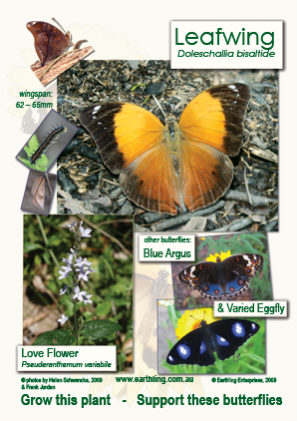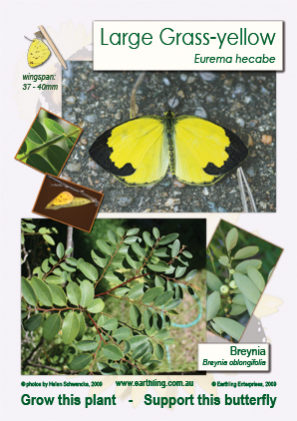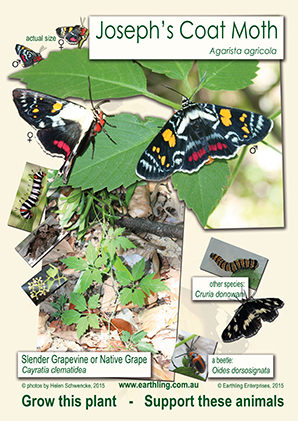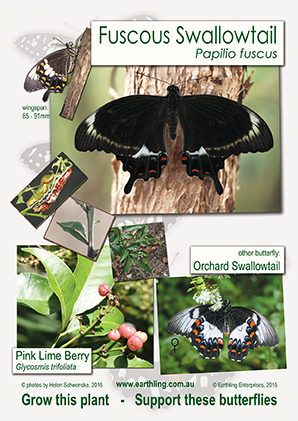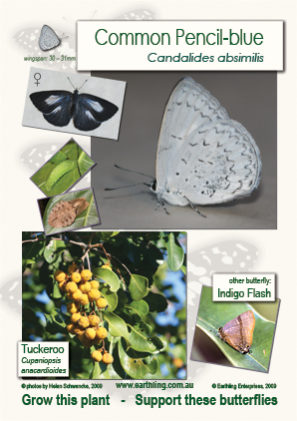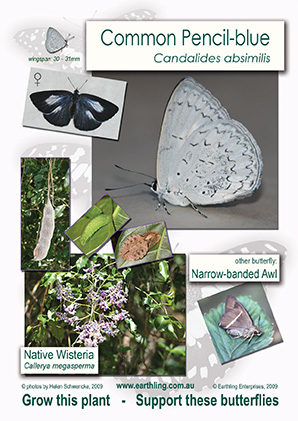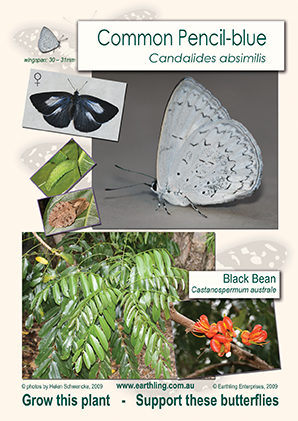Leafwing
(Doleschallia bisaltide)
Also known as Australian Leafwing, the Leafwing butterfly is usually found in lowland rainforest, where the usual larval food plant grows as a small herb in the ground layer as well as suburban gardens in Brisbane. Adults often fly in the adjacent woodland and open-forest but do not appear to breed in these habitats.
Host Plant:
The Native Love flower, (Pseuderanthemum variable), a plant whose natural habitat is the floor of rainforest or wet eucalyptus forest of northern and eastern Australia, north of Bega, New South Wales. Common names include night and afternoon, pastel flower and love flower.
This plant can also host the Blue Argus and Varied Eggfly butterflies which are also depicted on this sign.
Learn more about the Leafwing in the book entitled Create More Butterflies by Frank Jordan & Helen Schwencke which is available from Earthling Enterprises

